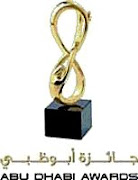
Reading Dubai's road signs
By Ashfaq Ahmed, Staff Reporter GULF NEWS
The expansion of Dubai warrants the need for a state-of-the-art, simple addressing system for the entire City.
The addressing system should be compatible not only to suit the needs of the residents but also assist visitors in locating address of various places. The system is in place in most areas of the city, but the people are not just using it.
The Dubai Roads and Transport Authority (RTA) has decided to enforce the comprehensive address system in city. The Authority wants residents to shift from landmark based address system to a real address system.
"The system will be enforced because the city is expanding and the landmark based address system will not work in future," said Engineer Bader Al Siri, Director of the Traffic Department at the Dubai Roads and Transport Authority. Plans to deliver postal mails, parcels, telephone, and water and electricity bills are on the cards.
People dealing with any departments will have to give their full house or office address in future instead of just post box numbers.
Al Siri said the people should know where they live and where they work, including building number, road or street name and number, and the community number. "It is also essential in case of emergencies," he said.
He said the address system is very easy but people need to change their mindset and should learn the system instead of relying on landmarks to tell their home or office addresses.
The project for the comprehensive address system, including building numbers, road and street names and numbers and the community numbers started in early 1980s. So far, some 69 per cent of the city area has been covered. Some 20 per cent more will be covered in 2006 and 2007 and some more areas in 2008. "It is an ongoing process as the city is expanding, new areas will be covered as they will be developed," Al Siri said.
Gulf News conducted an indepth study on road signs in Dubai in order to explain to its readers what they stand for, what they mean and how to follow them.

To start with, every one should have the latest edition of the Dubai Tourist Map, which is easily available in shops. The map is particularly required before the start of a trip by an individual, who is not familiar with Dubai roads.
Dubai is currently divided into nine sectors and each sector is further subdivided into a number of communities. There are currently 129 communities in Dubai are expected to reach 150 in a few years time with the development of new areas.
Each community possess a unique three-digit number and name. The Dubai tourist map shows the general location of the community within Dubai. For Example, if the community number is 376, it means that the area is located in Sector 3 and the community number is 76.
All main routes in Dubai are numbered. Highways connecting other emirates or main cities in the UAE are designated as Emirates Route or E-Route. They carry their number within a falcon emblem and possess two or three digits.

Four E-Routes pass through Dubai. They are E 11, connecting Abu Dhabi with Sharjah and Other Northern Emirates, E 44, connecting Dubai with Hatta, E 66 connecting Dubai with Al Ain and E 77 connecting Jebel Ali with Lahbab. The E-routes are the land routes to neighbouring countries as well. For example, E 11 connects the UAE with Saudi Arabia and Oman while E 44 connects the UAE with Oman.
Main roads connecting areas within Dubai Emirates are designated as Dubai or D-Route. They carry a two- or three-digit number in a fort emblem.
D-Routes parallel to the coast are numbered evenly starting from D 94 and decreasing as one goes away from the coast whereas, D-Routes perpendicular to coast are numbered odd and increases as one moves away from Abu Dhabi to Sharjah.
Major roads surround a community and these roads usually possess a name and three-digit number.
Streets within a community possess two digits number (from 1 to 99) and these numbers are repeated in each community.
Buildings on each street are numbered sequentially. Except building numbers, all the information is available in the tourist map to assist drivers to plan his route prior to starting his journey.
Guide signs are placed on all approaches to an intersection and in advance of ramps and all the interchanges on numbered routes. Information containing in the guide signs is essential for the motorist during his journey. These signs help motorist to reach an area/community he is interested in.
Guide signs placed on approaches to intersections display the numbers of the intersecting routes, direction to be taken in order to reach to the intersecting routes and the name of the area or community where the route ends physically.
Each numbered route is associated with the destination that is the community name where the route ends physically along with a major intermediate destination. Motorist should know that guide signs placed on the roads will not display all the areas names through which the route passes.
In addition to the numbered routes, signs that provide assistance to motorist to facilities like hospital, parks, shopping centres, hotels, etc are called supplemental destination signs.
Special signs are placed on roads to guide motorists to these places. Information contained on these signs display the name of that facility along with their symbols and the direction to be taken in order to reach that facility.
Community maps are placed at the main entrance of the community and at locations where people can park and look at it. To help find your way every map has an arrow to show where you are currently located. It also shows other facilities located within that area like schools, parks, gas stations, mosques, parking lots and post offices.
Inside each community, each street is identified by a sign containing the street number and name. Street number signs are placed at all turnings into a community from the main road and all junctions within a community. Street number signs also contain community number.
A building number plate is placed near the main entrance of a building. Odd numbers are allocated for buildings on left of the street and even numbers are on the right.
Distance between different Cities in UAE


























No comments:
Post a Comment